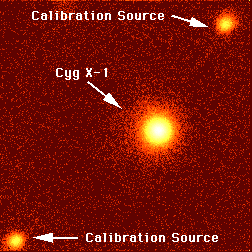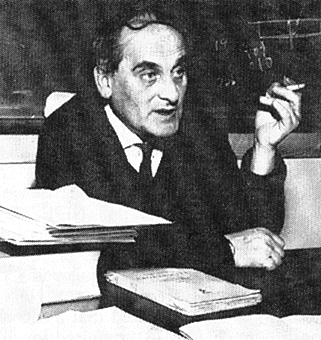Beppo -- the Satellite, the Science, and the Man
Beppo -- the Satellite, the Science, and the Man
| 19 September 1996 |
BeppoSAX is the first X-ray mission (and, of the coming near-future satellites, the only mission) which has the capability of observing sources over more than three decades of energy - from 0.1 to 200 keV - with a relatively large area, a good energy resolution, and imaging capabilities (resolution of about 1 arcminute) in the range of 0.1 - 10 keV. The instrument complement aboard the satellite consists of a medium energy (1 - 10 keV) concentrator/spectrometer, MECS; a low energy (0.1 - 10 keV) concentrator/spectrometer, LECS; a high pressure gas scintillation proportional counter (3 - 120 keV), HPGSPC; and a phoswich detector system (15 - 300 keV), PDS. The anti-coincidence scintillator shields of the PDS is also used as a gamma-ray burst monitor in the range 100 - 600 keV.
Another important feature of BeppoSAX is its ability to monitor large regions of the sky with a resolution of 5 arcminutes in the range 2 - 30 keV. This will allow the study of long-term variability of sources down to 1 mCrab (that's faint!) and, also, permit the detection of X-ray transient phenomena. These capabilities are the result of two coded mask proportional counters (Wide Field Cameras, WFC).
First Light on Cygnus X-1
BeppoSAX successfully performed its first scientific observation by pointing at the suspected black hole binary Cygnus X-1 from June 22 to 25. All of the instruments performed nominally and showed that the source remains in its high state with a soft spectrum in the energy band 0.1-10 keV with an intensity of about 1 Crab. Below 10 keV, the spectral shape is similar to that observed by Japanese X-ray satellite, ASCA. A hard component with a flux of about 0.3 Crab is visible in the energy range 10-300 keV. The source intensity is variable, with a peak amplitude of about 40 percent at low and high energies.
 Credit: BeppoSAX/LECS Team at ESA/ESTEC |
Helping to Solve the Gamma-Ray Burst Mystery?
On July 20, a gamma-ray burst was simultaneously detected in the gamma-ray burst monitor (GRBM, 60-600 keV) and one of the wide-field camera X-ray detectors (WFC, 2-30 keV) aboard BeppoSAX. The WFC provided an image of the field with a resolution of 5 arcminute (FWHM). The burst position is R.A.= 17h29m36s, Decl.= +49 02'.2 (equinox 2000.0). It will be possible to refine the position to a 1.5 arcminute error-box radius after additional calibrations. This position lies within 0.25 degrees of the center of the 2-degree error box of a simultaneous CGRO/BATSE event.Once scientists knew exactly where to look, other instruments were pointed at the BeppoSAX burst location. Observing from radio to X-ray, no peculiar sources have been found which can be definitively linked to the source of the gamma-ray burst. So, while the gamma-ray burst mystery continues, SAX has already proven itself to be a powerful new tool for scientists to use to probe for an answer to just what generates these incredible bursts of energy. "The more instruments we have, in as broad an energy range as we can get, which can react quickly to look in a precise location in the sky, the better our chances are of seeing something that will provide insight," said one high-energy astronomer.
A Satellite Called Beppo?
 |
After the Second World War, he moved to the Will Laboratory and worked with Cecil P.S. Powell in Bristol, UK. There, using a novel approach involving the use of photographic emulsions for detection of elementary particles, he contributed to the discovery of the pi-meson decay in 1947.
In 1952, Occhialini became professor of advanced physics in Milan. He played a crucial role in starting the European Space Research Organization, fore-runner of today's European Space Agency. He was one of the founding fathers of the COS-B project.
Giuseppe Occhialini died on 30 December 1993. The SAX satellite was named BeppoSAX in his honor in 1996.

